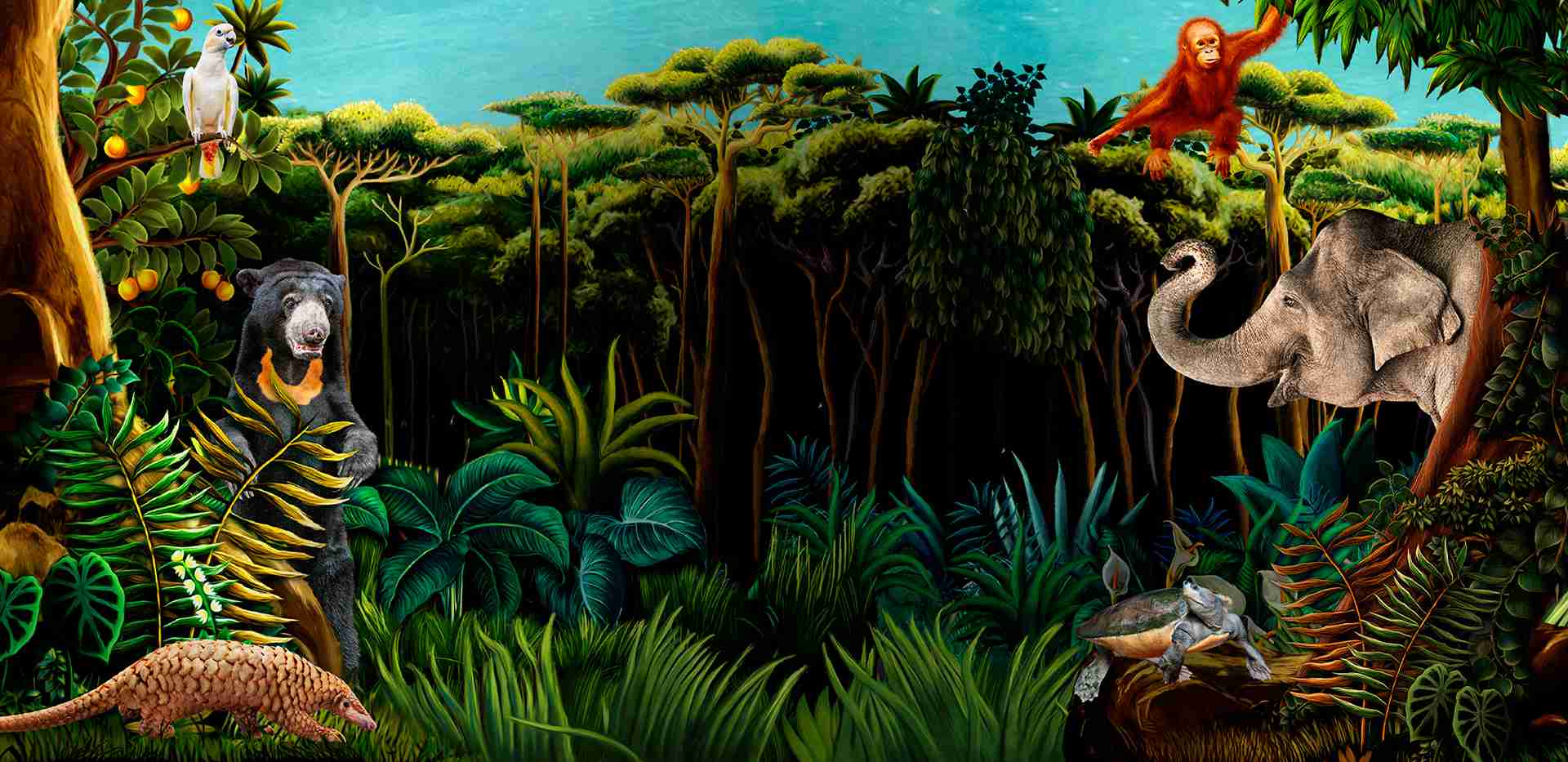Singapore Zoo
Animals & Zones
Zones

Orangutan Island
Visit the world’s first free-ranging orangutan exhibit to observe these arboreal apes amidst the treetops.
Animals in Our Care

African Dwarf Crocodile
At just 1.5m long, it is one of the smallest crocs. Mostly aquatic, they may bask on logs or even climb onto low tree branches!

African lion
Lions live in social groups known as prides, made up of one or more mature males, several closely-related females and their young. Males roar and spray urine to advertise their territory to rivals.

African painted dog
Hunting dogs look out for their pack members, especially the young and the sick.

African Spurred Tortoise
At just 1.5m long, it is one of the smallest crocs. Mostly aquatic, they may bask on logs or even climb onto low tree branches!

Aldabra Giant Tortoise
Weighing up to 230kg, this slow-moving tortoise’s equally slow metabolism allows it to survive over a year without food or water.

Alligator Snapping Turtle
Primarily carnivorous, these ambush predators stay motionless in the water and reveal the worm-like appendage on their tongues to lure unsuspecting prey.

Annam Leaf Turtle
Primarily carnivorous, these ambush predators stay motionless in the water and reveal the worm-like appendage on their tongues to lure unsuspecting prey.

Asian Box Turtle
Its hinged plastron (shell underside) allows it to close its shell completely, protecting their head, limbs, and soft body parts when threatened.

Asian elephant
When size doesn't help. With 40,000-50,000 left in the wild, will the last of the megaherbivores be wiped out too?

Asian Giant Softshell Turtle
A primarily carnivorous ambush predator, it spends 95% of its life buried and motionless, with only its eyes and mouth protruding from the sand.

Asian small clawed otter
These smallest of 13 otter species in the world are social and playful animals.
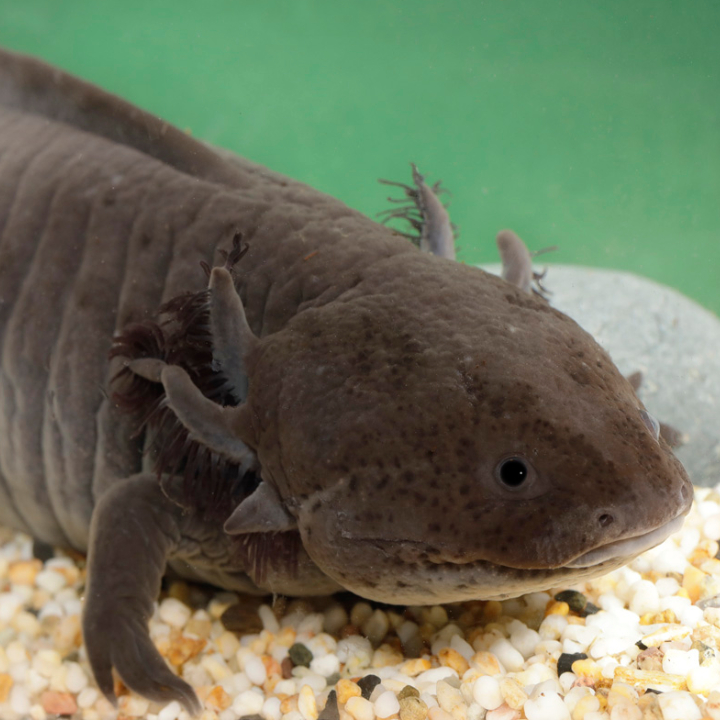
Axolotl
These dark-coloured descendants of the tiger salamander can shift their hue a few shades lighter or darker as needed for camouflage.

Babirusa
Babirusa means pig deer in Malay due to its tusks that look very much like the antlers of a deer.

Big-Headed Turtle
While this turtle’s head is so big that it can’t be withdrawn inside its shell, it does have a large bony “roof” on its head for protection.
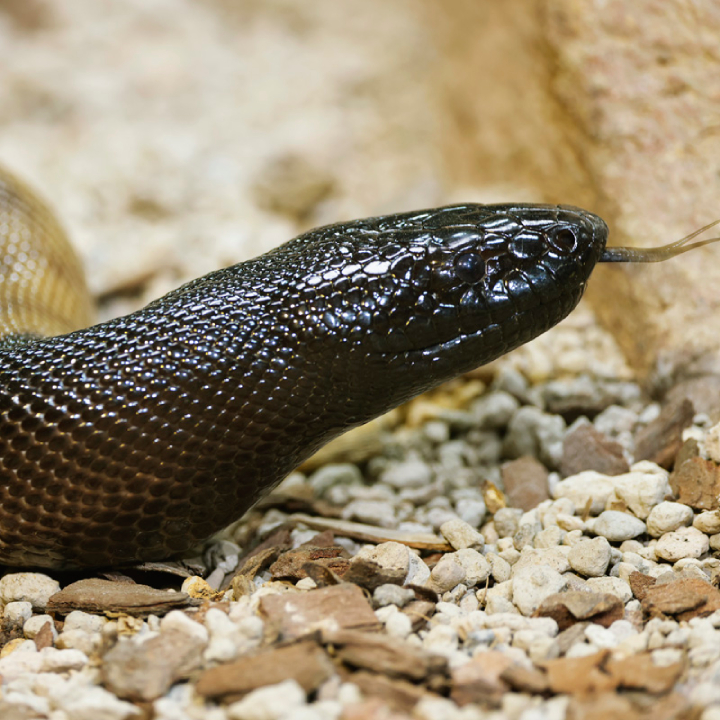
Black-Headed Python
To stay hidden while basking, this snake buries itself with just its head exposed. Its dark colour helps it absorb heat quickly, warming its brain and senses.

Blue-Legged Mantella
Their eggs are laid on canyon walls or under rocks, which are then flooded by water to complete their development in temporary pools.

Bornean orangutan
Orangutans are apes, which means that unlike monkeys, they do not have a tail. Found in the rainforests of Borneo and Sumatra, they have special feet with long toes for grasping branches, and long limbs that can stretch out far so that they can move easily through the treetops.
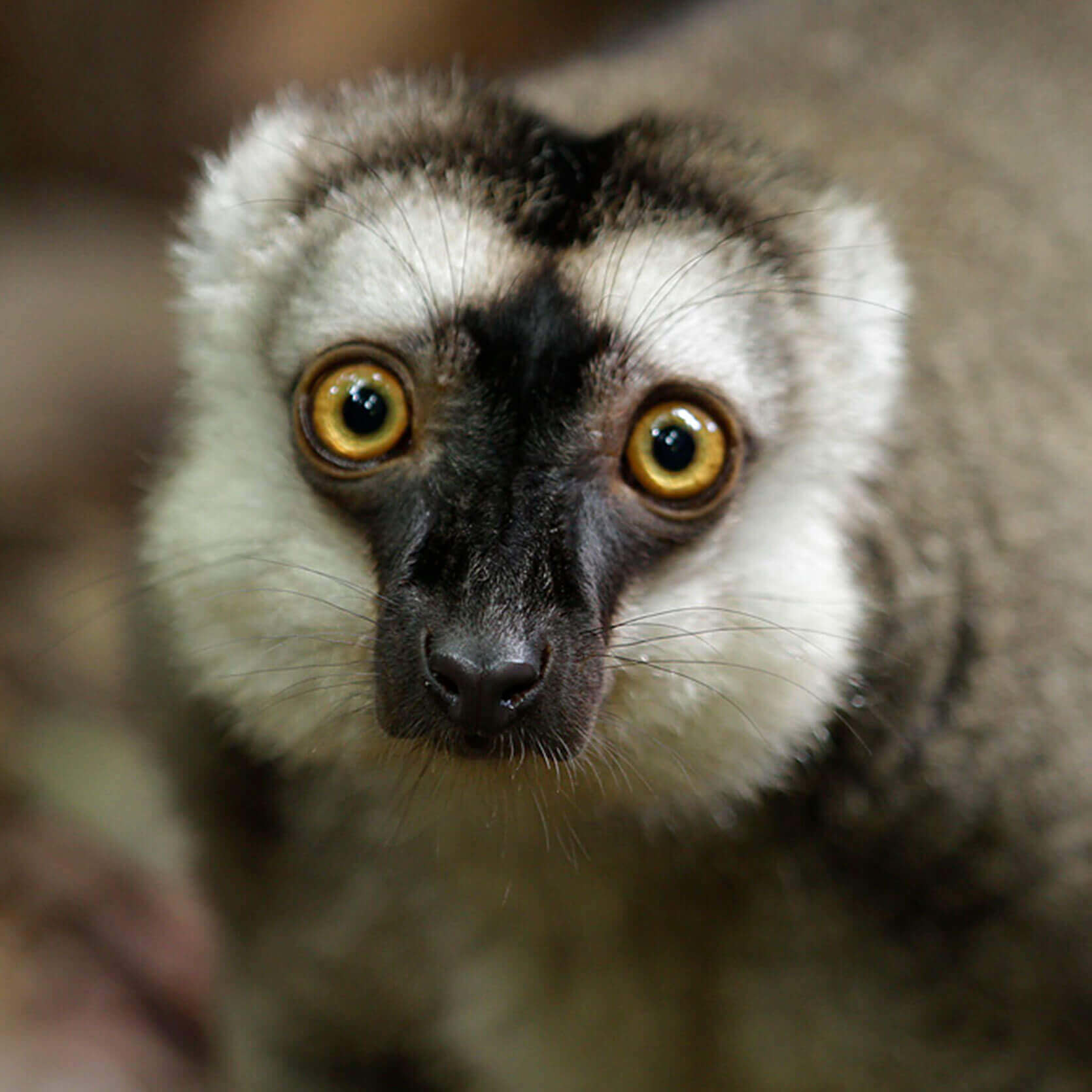
Brown lemur
The brown lemur moves through the forest canopy on all fours. Its tail is as long as or longer than its body and is used to maintain its balance when it performs aerial leaps.

Burmese Roofed Turtle
We work with other zoos through Managed Species Programmes to boost genetic diversity and sustain their population under human care.

Burmese star tortoise
Deemed functionally extinct in the 2000s. We work with conservation partners to reestablish wild populations in its native home - Myanmar.
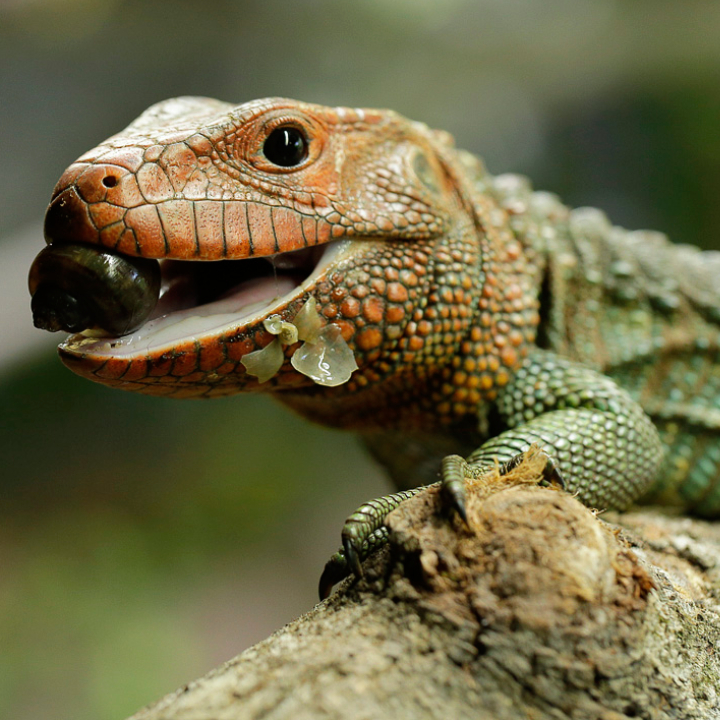
Caiman Lizard
Named for its large, heavy scales. Feeding primarily on invertebrates, it crushes them with strong back teeth, spitting out broken shells before consuming the softer parts.

Cheetah
The fastest land animals, differentiate from other spotted cats by two black tear lines that extend from the corner of their eyes to the mouth.

Chrisangi leaf insect
This insect, a master of disguise, is a species of stick insect native to Singapore. Resembling a leaf, it blends into its surroundings, making it difficult to spot.

Common crowned pigeon
Their namesake blue lacey crests, resembling elaborate crowns, are actually modified feathers, making them truly majestic.

Cotton-top tamarin
Tamarins usually have twins or triplets. Dad piggybacks the babies most of the time, passing them back to mum only when the babies need to nurse.

Crested Gecko
These tiny geckos lack eyelids. Instead, they lick a clear membrane over their eyes to keep them clean!

Crocodile Monitor
While it uses its tail primarily as a counterbalance when leaping from branch to branch, it can also use it like a whip for defence.
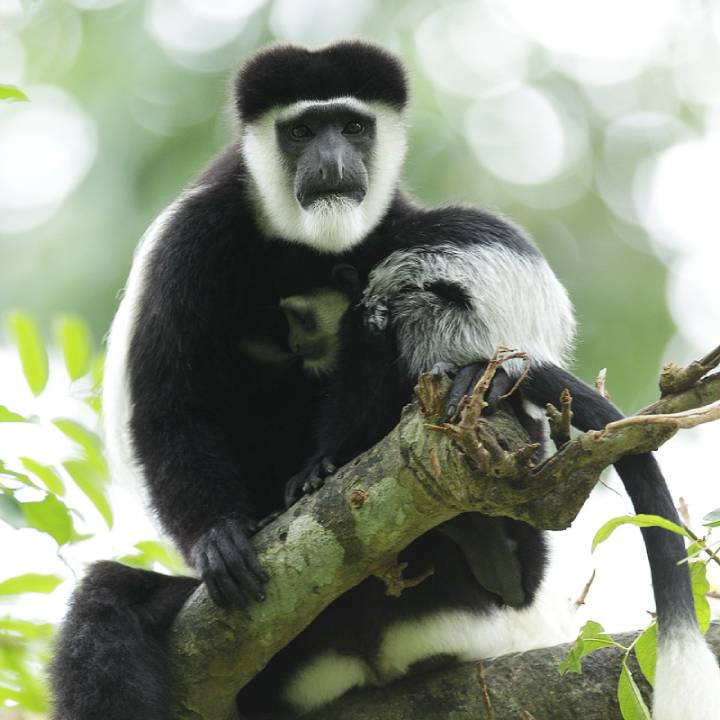
Eastern black-and-white Colobus monkey
See more of our Colobus monkeys at Primate Kingdom. They are capable of leaping up to 15 metres and are rarely seen on ground.

Eclectus parrot
Eclectus parrots are among the best talking birds, easily mimicking human speech and a wide range of sounds like bells, whistles, and even laughter.

Electric Blue Gecko
Critically endangered and just 3 inches long, this bright blue gecko uses colour—not venom—to avoid predators.

Falabella
Falabellas are the smallest breed of horses in the world.
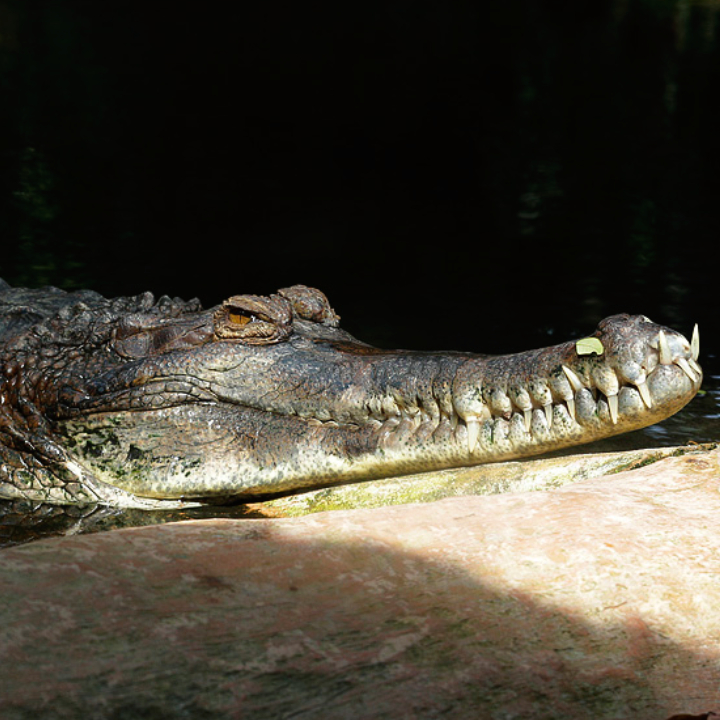
False gharial
Also known as the tomistoma, this fish-eating crocodilian can grow to an impressive 5 metres long.

Fossa
What makes the fossa Madagascar’s top predator? Its adaptations include a good sense of smell and keen vision, even in low-light conditions.

Gaboon Viper
The Gaboon viper has the longest fangs of any venomous snake—up to 2 inches—and a powerful, silent strike.

Giant Asian Pond Turtle
Reaching up to half a metre in length and 12kg in weight, this gentle giant is one of the world’s largest freshwater turtles.

Gila Monster
One of few venomous lizards, it chews venom into its prey using grooved teeth and powerful jaws.
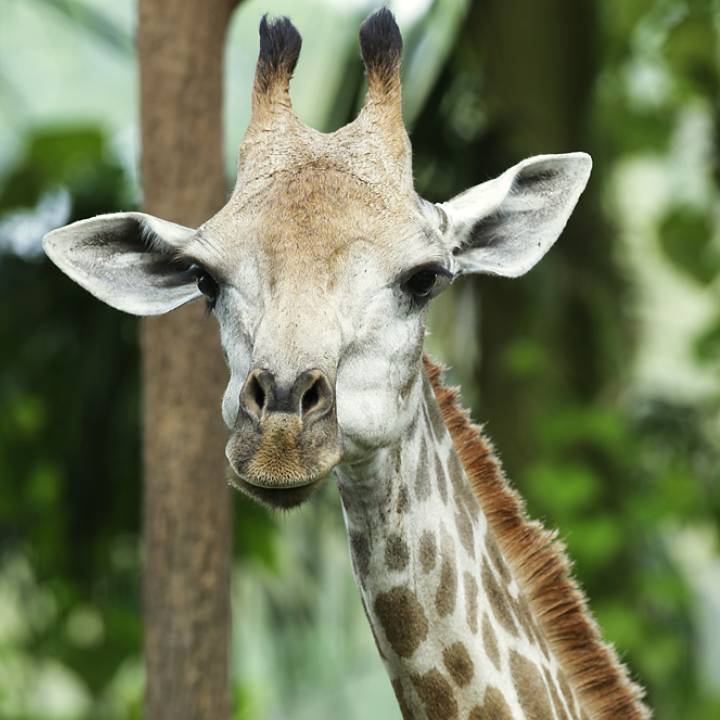
Giraffe
Two young Rothschild’s giraffes Adhil and Balaji arrived at Singapore Zoo, part of a globally managed breeding programme under the EAZA Ex-situ Programme.

Golden lion tamarin
Their namesake mane isn't just for looks. The long fur around their face and ears enhances their hearing and helps with communication within their group.
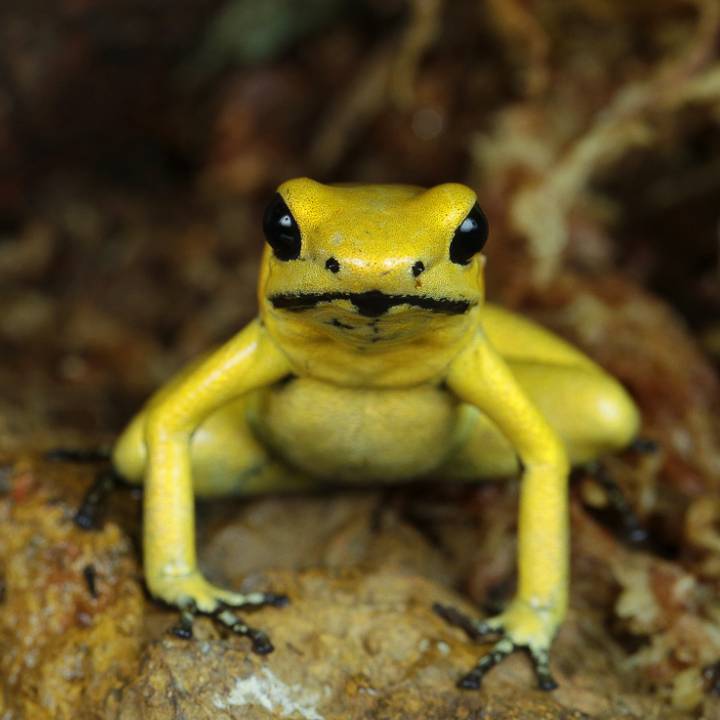
Golden poison frog
Known for their extreme toxicity, these frogs produce toxins twenty times more potent than that of any other poison dart frog.

Greater mousedeer
Despite their names, greater mousedeer are neither rodents nor true deer. They belong to their own unique family, Tragulidae, and are considered one of the most primitive living ungulates (hoofed mammals)!

Green basilisk
The green basilisk lizard is also known as the plumed or double-crested basilisk. Males can be distinguished by the showy crests on their heads and backs, which are used to impress females.

Green Pit Viper
This nocturnal viper uses heat-sensing facial pits to detect and strike warm-blooded prey in the dark.

Grey kangaroo
One of the largest kangaroo species commonly found in Australia, the eastern grey kangaroo swims well and evades predators by diving.

Hamadryas baboon
Hamadryas baboon are hardy monkeys with a strong build and a dog-like snout. Males and females look so dissimilar that they have been thought to be of different species.

Indian crested porcupine

Indian Gharial
Males grow a snout bump that acts as a vocal resonator and helps attract mates during the breeding season.

Indian Spotted Pond Turtle
This shy turtle croaks softly when retracting inside its shell, and can grow up to 40.5cm long.

Indian Star Tortoise
Its star-patterned shell helps with camouflage, and males often battle rivals by flipping them over.

Jungle nymph
The undisputed queen of stick insects, adult females can reach a whopping 65 grams, making them the heaviest in the world! Males, on the other hand, are slender and lightweight, topping out at around 6 grams.

King Cobra
Despite its fearsome reputation amongst humans, the world’s longest venomous snake has a diet consisting mainly of other snakes.

Knob-Tailed Gecko
This ground-dwelling Aussie gecko lives in sand plains and woodlands, rarely climbing trees.

Komodo Dragon
Venomous and massive, this lizard runs at speeds up to 20km/h, and can even vomit to flee faster when threatened!

Lesser mousedeer
With a rodent-like face and a rabbit's body perched precariously atop the pencil-thin feet of a piglet, the mousedeer looks like an odd mix of different animals.

Macaw

Malayan flying fox
With a wingspan of 1.5 – 1.7m, these are some of the largest bats in the world.

Malayan horned frog
When threatened, they inflate their throat and let out a loud, unexpected honk that sounds like a cross between a duck and a car horn.
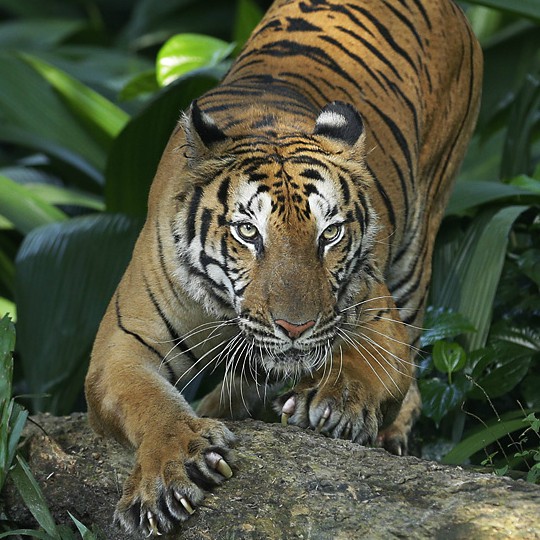
Malayan tiger
Tigers are at the apex of the food chain. These solitary hunters can handle animal prey up to a ton in weight.

Meerkat
Despite their small size, meerkats are surprisingly brave. When facing danger, they'll stand tall and hiss together, creating a formidable front to deter predators.

Mini pig

Nicobar pigeon
Unlike its common city cousins, the Nicobar pigeon boasts feathers that shimmer with metallic green, copper, and bronze hues. This iridescence makes them resemble living jewels fluttering through the forest.
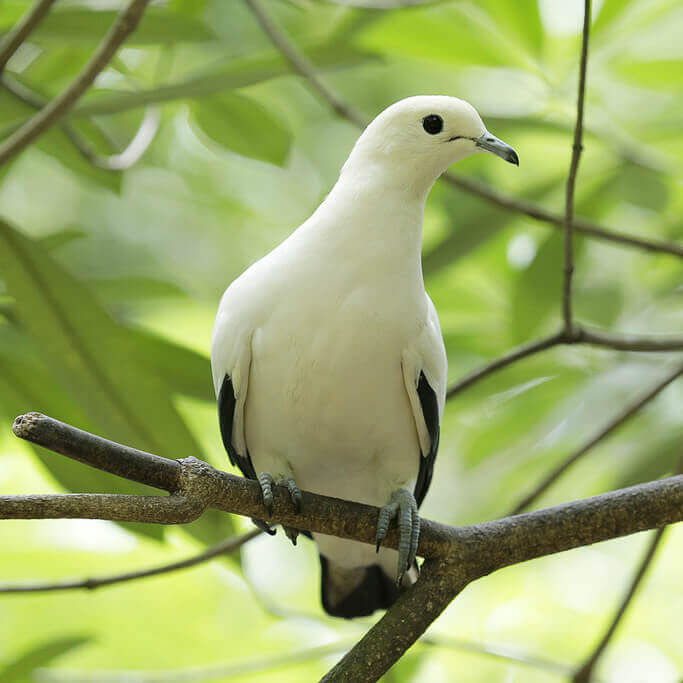
Pied imperial pigeon
As the name suggests, they boast a beautiful "pied" pattern, with a mostly white or pale cream body contrasted by striking bluish-black flight and tail feathers.

Ploughshore tortoise
Males use their plough-shaped shell tip to ram and flip rivals during courtship battles.

Prevost's squirrel
Their scientific genus name, Callosciurus, actually means "beautiful squirrel," living up to their stunning orange and black coats. They're considered one of the world's most colorful squirrels!

Pygmy goat
Pygmy goats are the smallest breed of goats in the world. Fully grown, they measure 40cm from floor to shoulder, and weigh around 30kg.

Pygmy hippo
They are native to the forests and swamps of West Africa, primarily in Liberia, with smaller populations in neighboring countries.

Rabbit
Long movable ears and large eyes placed high on the head, providing near-360° vision, help rabbits detect predators from afar. Powerful hind-limbs help them make a quick getaway.
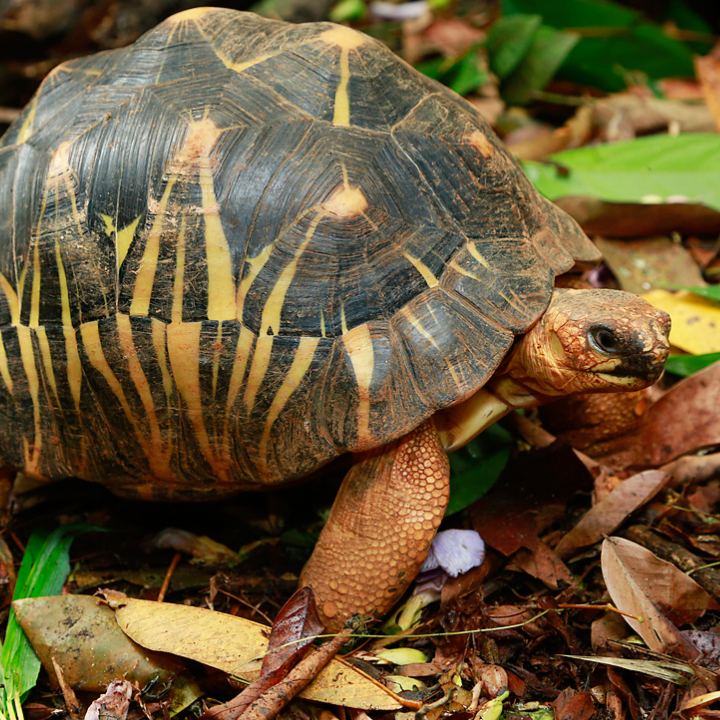
Radiated tortoise
Its shell has fine yellow starbursts and sensitive nerves—it can feel when you touch it!

Red-Headed Rat Snake
This tree-dwelling snake uses agility and camouflage to hunt and hide in Asian forests.

Red-shanked douc langur
The douc langur's almond eyes and delicate features lend a kind of wistful magic to their beauty.

Red river hog
Unlike some landlocked pigs, red river hogs are excellent swimmers and love spending time near water. They even utilize their strong legs and hooves to gallop through mud with ease.

Regal horned lizard
Game for a scaly good time? Slither down to RepTopia at Singapore Zoo and learn more about the regal horned lizard.

Rhino Iguana
Named for their horned snouts, these stocky iguanas raise back spines to look more fearsome.

Ring-tailed lemur
A repertoire of some 22 different calls helps these primates engage in complex social interactions.

River toad
When the scorching desert sun beats down, River toads aren't ones to sweat it out. Instead, they burrow into the cool sand, crafting cozy underground hideaways where they'll spend most of the scorching summer.

Rote snake-necked turtle
The Zoo hosts Asia’s only colony of this rare turtle, helping safeguard its future.

Sidewinder (Rattlesnake)
Their sidewinding gait makes them the fastest-moving of all rattlesnakes. Shuffling their bodies into soft sand, with their heads barely exposed, they twitch their tail to attract prey.

Skunk
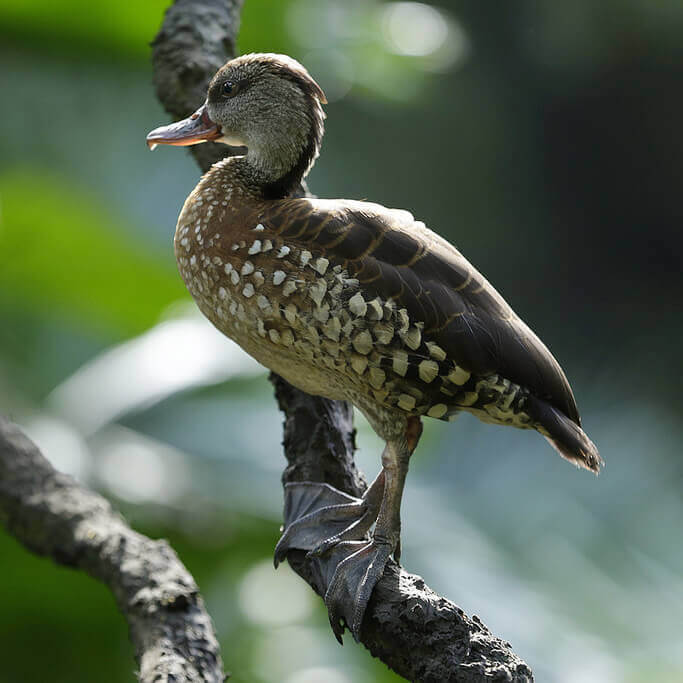
Spotted whistling duck
Spotted whistling ducks have a variety of whistling and piping calls, used for communication, greeting each other, and even defending their territory.

Sulcata tortoise
Sulcata tortoises are one of the world’s largest tortoises and can grow up to 100kg!

Sumatran orangutan
Found in the rainforests of Borneo and Sumatra, they have special feet with long toes for grasping branches, and long limbs that can stretch out far so that they can move easily through the treetops.
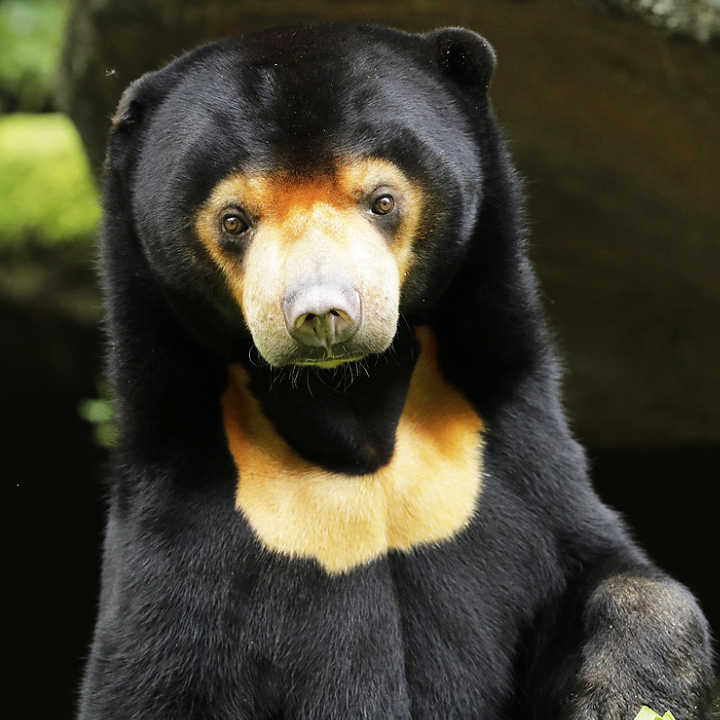
Sun Bear
Sun bears get their name from the sun-shaped patches of fur they have on their chests.

Tokay Gecko
These bug-hunting geckos thrive in cities and even have a light-sensing “third eye” on top of their head.
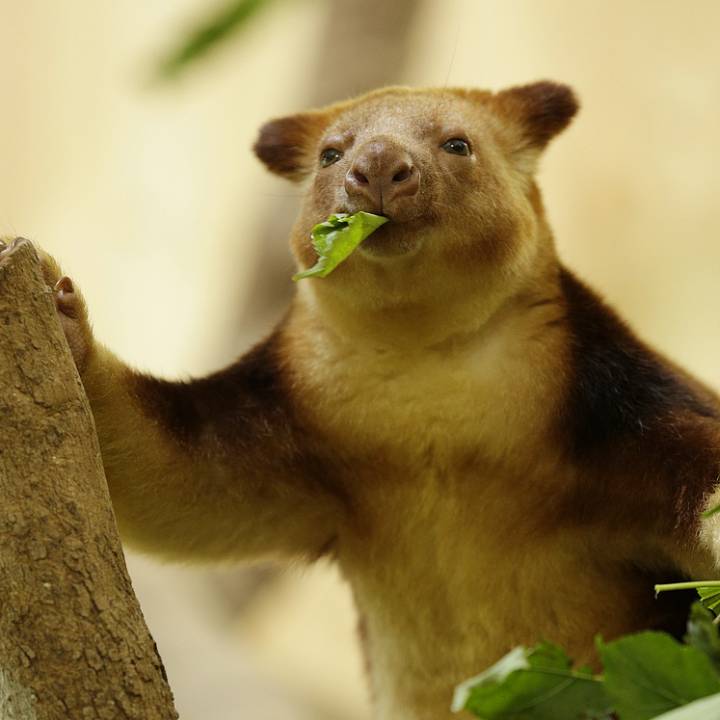
Tree kangaroo
These kangaroos traverse the treetops with ease with their powerful arms, sharp claws and long tail.

Two-toed sloth
Whether they are sleeping, eating, mating, or giving birth, sloths carry out most of their activities hanging upside-down from tree branches.

Veiled chameleon
Their binocular vision enables them to move their eyes independently, focusing on two different objects at once!

Vietnamese Crocodile Lizard
Named for their croc-like tails, these rare lizards give birth to live young—unusual for reptiles!

Vine Snake
These slender, tree-dwellers are venomous, using their venom to subdue prey. However, they are not considered dangerous to humans.

Western Diamondback Rattlesnake
While they aren’t born with rattles, every shedding leaves a little piece on their tail – adding a new ‘button’ and making their rattle bigger.
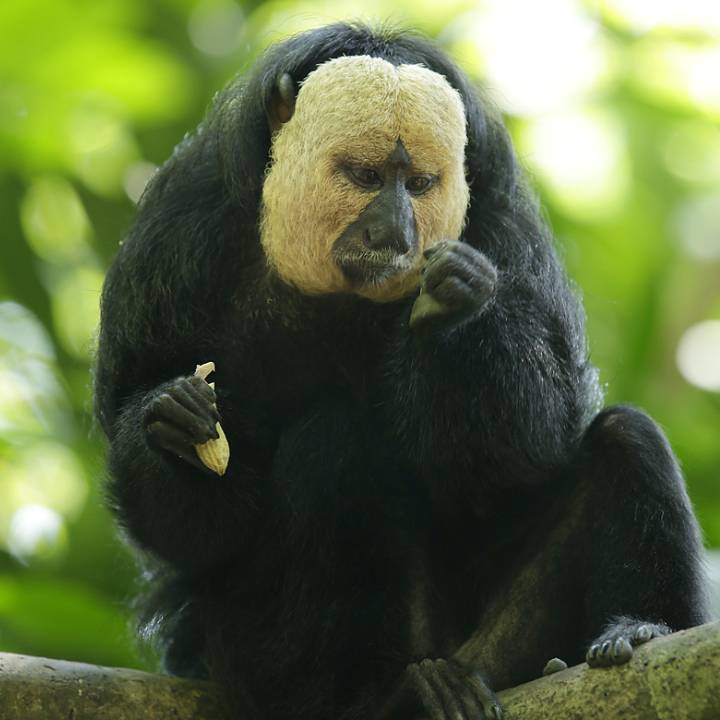
White-faced saki monkey
Sakis can make downward leaps covering close to 10m, a feat which has earned them the nickname “flying monkeys”. Head down to Fragile Forest or Primate Kingdom zones to see them in action.

White-Lipped Python
With rainbow-sheen scales and more teeth than any other python, it’s a dazzling ambush hunter.

White rhinoceros
A huge animal that feeds exclusively on grass, the white rhino has a wide mouth shaped for ‘mowing’ short grass. Its square lips set it apart from the hook-lipped black rhino.

Yellow-Spotted Climbing Toad
Living high in the canopy, females are bigger and brighter than their brownish-orange mates.

Zebra
Stallions of this species mark and maintain territories using middens (dung piles). The Grevy's zebra is distinguished from other zebras by its round ears, white underbelly and the bullseye stripe pattern on its rump.
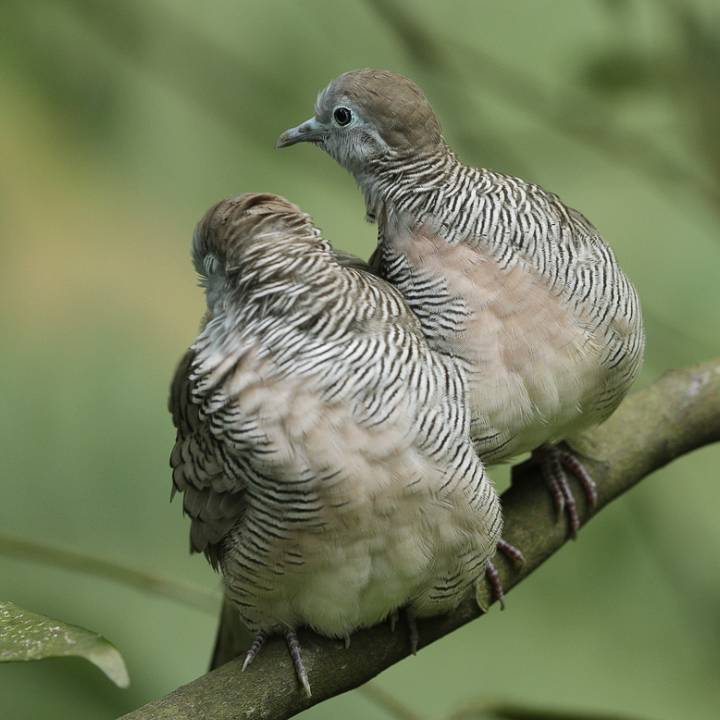
Zebra dove
True to their name, their feathers are adorned with fine black and white bars, resembling zebra stripes.











